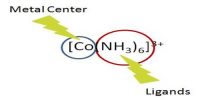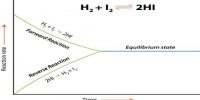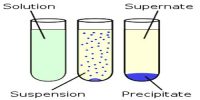Contact Process involves the equilibrium reaction of oxidation of SO2 gas by gaseous oxygen in air to manufacture large quantities of SO3 gas.
2SO2 (g) + O2 (g) ↔ V2O5↔2SO3 (g) [ΔH0f = -47 kcal/mole]
The formation reaction of SO3 involves a decrease in the overall moles of the reactants. By Le Chatlier’s principle, when large pressure is applied, forward reaction is favoured. 700 atm – 1200 atm pressure is maintained on the 2:1 mole ratio mixture of pure SO2 and O2 gases in the reaction chamber. SO3 production is an exothermic reaction. Hence, increase in temperature favours SO3 dissociation. However, lowering of temperature prolongs the time of attainment of equilibrium. Therefore, an optimum temperature at nearly 400°C to 450°C is maintained to favour the equilibrium.
The most widely used catalyst for SO3 production is porous vanadium pentoxide (V2O5). Presence of moisture deactivates the catalyst. Only dry and pure SO2 and O2 gases are used over the catalyst. Since oxidation of SO2 is a slow process, presence of V2O5 speeds up the equilibrium process and high yield of SO3 is achieved in a short period. SO3 is the anhydride of H2SO4.
Therefore, SO3 from contact process along with steam is used in oleum and H2SO4 manufacturing processes in contact process, the yield of SO3 is nearly 97%.












